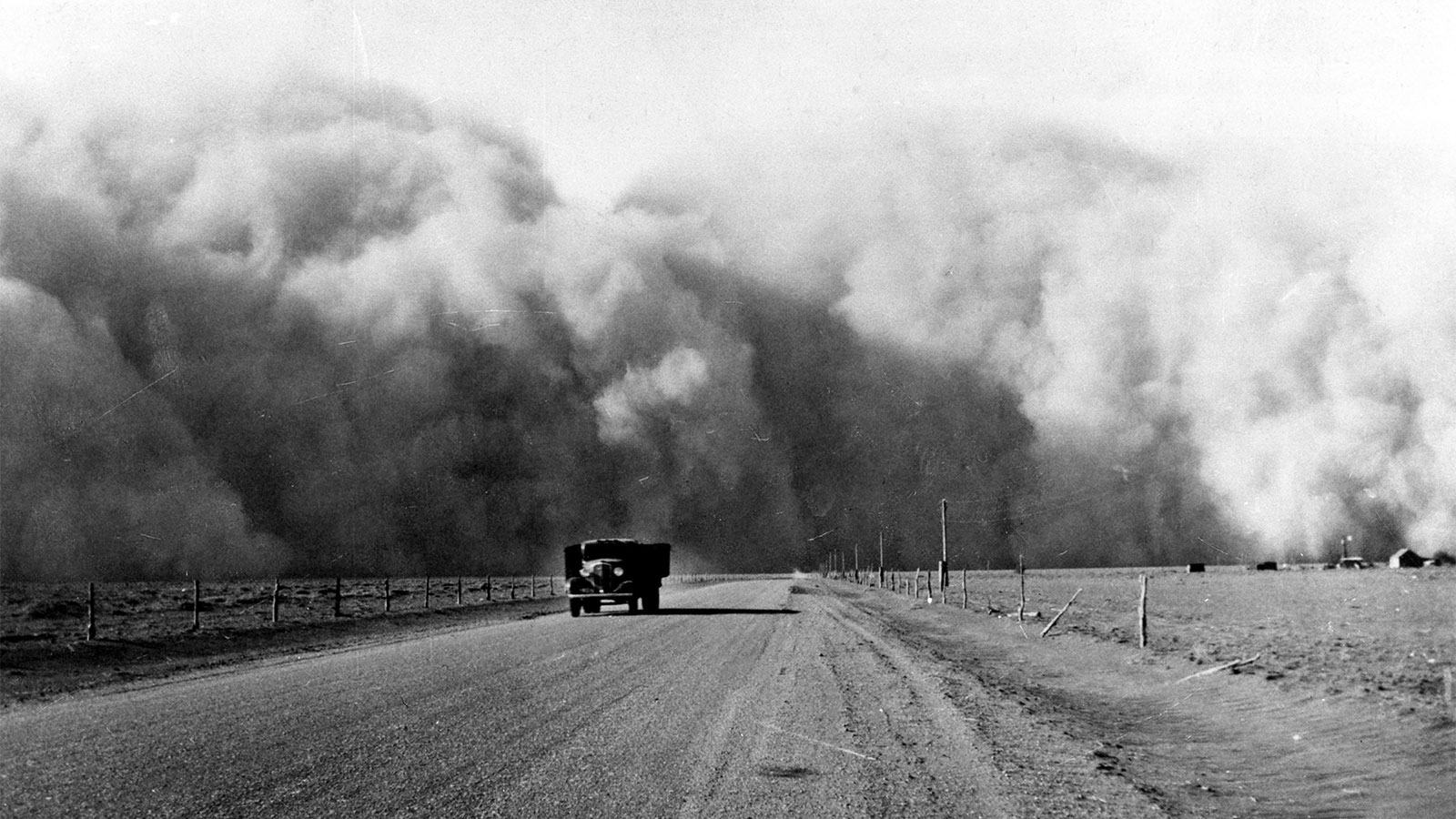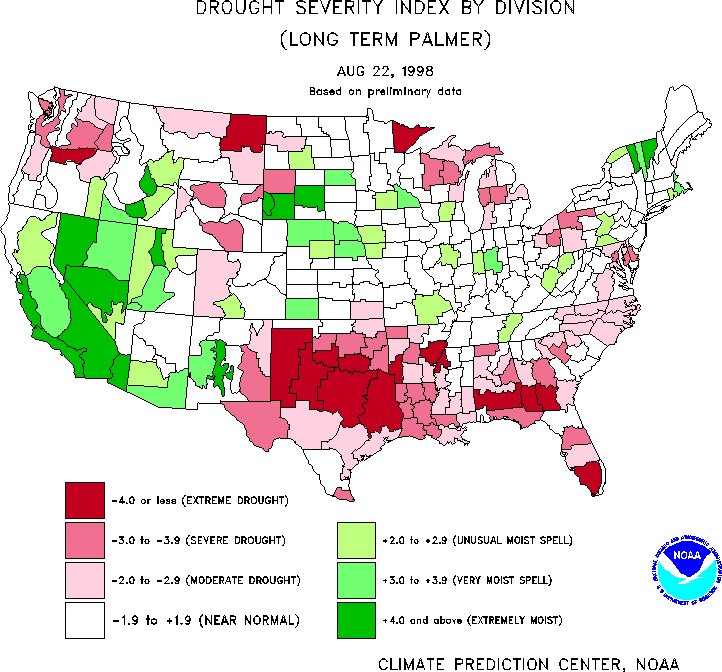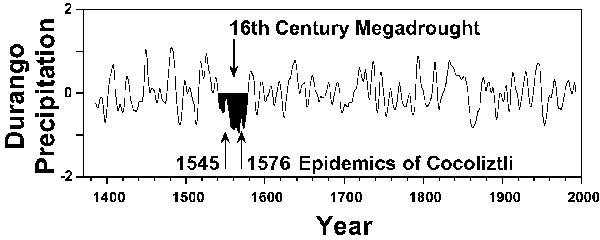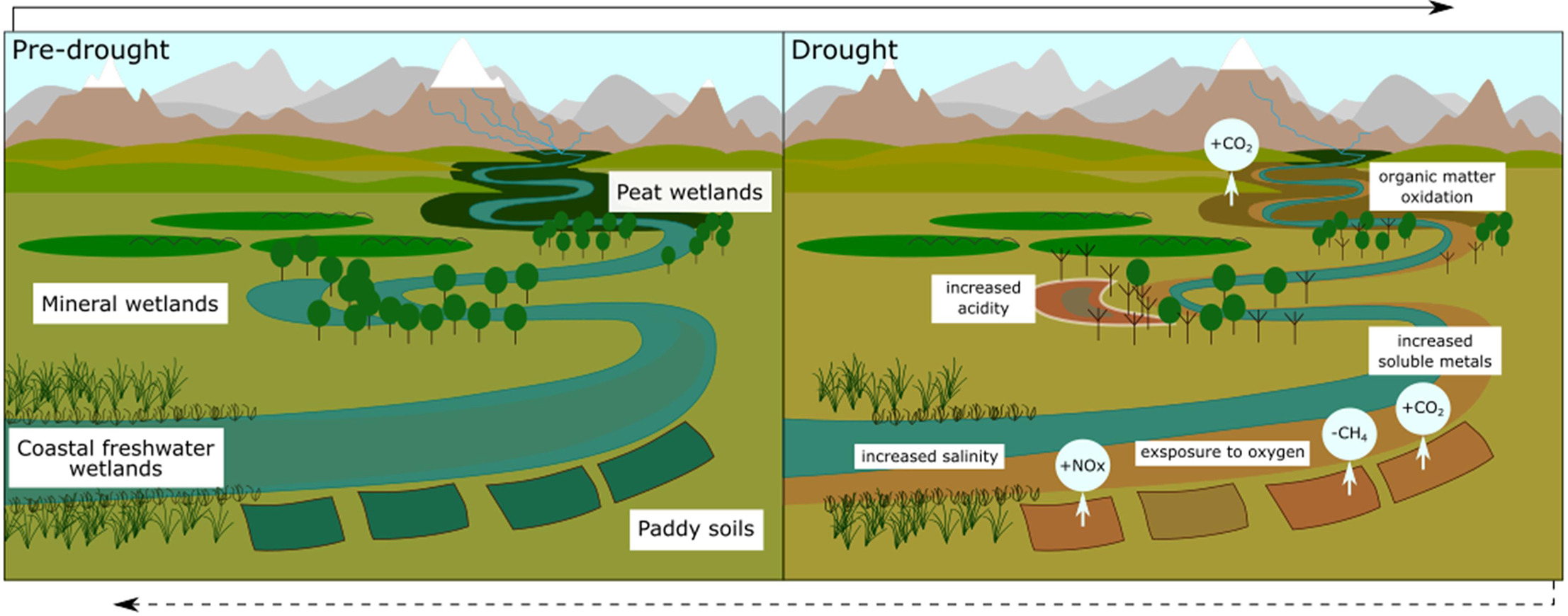Droughts
by Samanvi Singh

Source of Image
How are droughts caused?
Droughts are caused by low amounts of precipitation (rain) over long periods of time. Atmospheric conditions such as climate and changes in local landscapes cause these low amounts of rainfall. When there is no rainfall for a long time, vegetation may start to die, which affects organisms in the area because they will lack sources of food, and of course water.
Top 3 Most Dangerous Droughts
- The Dust Bowl
- The Drought of 1998
- The 16th Century Megadrought
This drought in Mexico was an incredibly fatal and terrible drought. This happened because the extreme dry conditions caused by the drought made the outbreak of deadly diseases, specifically Cocoliztli, that came from rats, worse.

Source of Image
The Dust Bowl occurred in the 1930s, in the southwestern Great Plains region of the U.S. The Dust Bowl was a time of turmoil because of the agricultural damage and economic hardship it caused. Due to dryland farming farmers were forced to do, the prairie grasses were destroyed, the land became bare, and environmental/agricultural damage began to occur. The effect of this agricultural damage was economic hardship, especially for farmers.
Below is a great video summary of this important historical drought!

Source of Image
The Drought of 1998 occurred in North Carolina from 1998-2002. Similar to most droughts, because of the extreme lack of water, it became hard to manage all the uses for it, such as flood control or other recreational uses. Again, like the Dust Bowl, it caused a lot of financial losses and economic hardship in general.

Source of Image
Below is a research paper that goes into depth about this drought!
Mexico's 16th Century MegadroughtEffects of Droughts on Savannas
Broughts have an incredibly negative impact on savannas. Savannas are already incredibly dry areas, so if a drought were to occur, it can change already sparse vegetation in the savanna by constantly killing off trees.
If you'd like to know more about savannas, check out the webpage below!
All About Savannas!Negative Effects of Droughts
Droughts cause to water scarcity and impact water quality, and impact other components of the natural environment. These effects on the natural environment have a domino effect, because it causes a variety of other issues. If there is poor water quality and quantity, crops will suffer, which leads to food scarcity, which leads to potential starvation and poor health of citizens. Lack of food and water also lead to economic issues and is just one of the many ways droughts impact our world negatively.
Positive Effects of Droughts
Droughts can balance the health of wetlands. An abundance of water can hinder the productivity of wetlands; however, droughts can combat the overload of water balance the health again. When water evaporates (due to the drought), nutrients is left behind, allowing for the growth of the wetland.

Source of Image
Effect of Droughts on Elephants
Droughts do not have any sort of positive impacts on elephants, in fact they are quite deadly. Some of these negative impacts include:
- Lack of Food and Water
Elephants are extremely large animals, without enough sustenance they will die, and often die young, or they will develop abnormally, due to their mothers' lack of access to water.
- High Temperatures
In droughts, average temperatures often rise, leaving elephants with high internal temperatures that can cause sickness and death.
If you'd like to know more about elephants, check out the webpage below!
All About Elephants!Citations
Source 1: What is a drought and what causes it? | NASA Global Precipitation Measurement Mission. (n.d.-c). https://gpm.nasa.gov/resources/faq/what-drought-and-what-causes-it
Source 2: The Dust Bowl | Great Depression and World War II, 1929-1945 | U.S. History Primary Source Timeline | Classroom Materials at the Library of Congress | Library of Congress. (n.d.). The Library of Congress. https://www.loc.gov/classroom-materials/united-states-history-primary-source-timeline/great-depression-and-world-war-ii-1929-1945/dust-bowl/#:~:text=Results%20of%20a%20Dust%20Storm%2C%20Oklahoma%2C%201936.&text=Between%201930%20and%201940%2C%20the,Congress%20passed%20the%20Homestead%20Act.
Source 3: Weaver, J. C. (n.d.). The drought of 1998–2002 in North Carolina—Precipitation and hydrologic conditions. https://pubs.usgs.gov/sir/2005/5053/
Source 4: Acuna-Soto, R., Stahle, D. W., Cleaveland, M. K., & Therrell, M. D. (2002, April 1). Megadrought and megadeath in 16th century Mexico. https://stacks.cdc.gov/view/cdc/13773
Source 5: Severe drought limits trees in a semi-arid savanna on JSTOR. (n.d.). www.jstor.org. https://www.jstor.org/stable/26825328#:~:text=We%20suggest%20that%20increasing%20drought,by%20repeatedly%20killing%20off%20trees.
Source 6: Yonature. (2021, November 23). Effects of droughts: positive, negative, examples. Yo Nature. https://www.yonature.com/effects-of-droughts-positive-negative-examples/
Source 7: Society, F. S. O. E. &. (2023, January 7). Climate change is leaving African elephants desperate for water. ANU Fenner School of Environment & Society. https://fennerschool.anu.edu.au/news-events/news/climate-change-leaving-african-elephants-desperate-water
Source 8: Drought impacts | Drought.gov. (n.d.). Drought.gov. https://www.drought.gov/impacts#:~:text=Drought%20can%20lead%20to%20decreased,outcomes%20as%20livelihoods%20are%20challenged.&text=During%20drought%20conditions%2C%20fuels%20for,out%20and%20become%20more%20flammable.